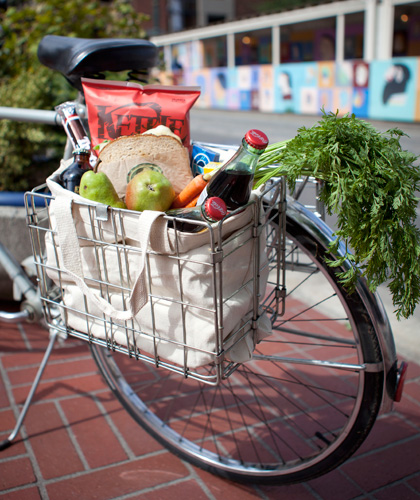BY JONATHAN FROCHTZWAJG
 Our October cover story documents fresh and local trends in the c-store industry. Convenience stores may also help solve the problem of food deserts.
Our October cover story documents fresh and local trends in the c-store industry. Convenience stores may also help solve the problem of food deserts.
BY JONATHAN FROCHTWAJG
 |
// Photo by Adam Wickham |
Our October cover story documents fresh and local trends in the c-store industry. Convenience stores may also help solve the problem of food deserts.
Food deserts, areas where residents can’t conveniently buy fresh produce and other healthy food because there aren’t grocery stores nearby, are an issue of concern to urban planners and public health advocates across the country. In Oregon, these areas of food inaccessibility aren’t as pronounced as in some other places, but they do exist, says Nathan McClintock, a professor of urban studies and planning at Portland State University with expertise in food deserts.
Perhaps the most notable food desertification in the state is occurring in East Portland, where a growing concentration of low-income residents has led to numerous supermarket closures in recent years. “As East Portland becomes more and more of an impoverished area,” McClintock says, “you are definitely seeing a process of desertification taking place.”
Convenience stores are an inextricable part of the food-desert issue. After all, once grocery stores have shuttered, they’re often the only food retailers left in the neighborhood. But even as c-stores sell more fresh and healthy food, the question remains: in a food desert, is a mini mart an oasis — or a mirage?
Rebecca Bodonyi is the coordinator of the Healthy Retail Initiative, a Multnomah County program that seeks to increase the amount of produce and other diet-conscious options in neighborhood stores by offering store owners incentives such as grants and marketing assistance. She says studies conducted outside Oregon provide evidence that people who live in food deserts depend more on convenience stores for food. They may be worse off for it: Bodonyi says there is also evidence that those who live near supermarkets are more likely to eat the recommended amount of fruits and vegetables and less likely to be obese or overweight.
Not all convenience stores are created equal. Ethnic markets, such as bodegas, typically offer much more produce than conventional c-stores, McClintock points out, and can almost fill a grocery store’s role in the community. Green Zebra’s Lisa Sedlar says she wants her stores to function similarly — and that their small footprint and lean revenue model make them better suited than supermarkets for serving food deserts.
“Increasing access to healthy food is really important to me,” she says. “I think my model can do better than the big guys because the big guys are limited by having this big-box store and a revenue model to meet this huge projection.”
As for more traditional convenience stores’ efforts to stock more healthy offerings, both McClintock and Bodonyi say it’s a step — if only a step — in the right direction. Bodonyi notes that the City of Portland has a goal that by 2035, 90% of Portlanders will live within half a mile of a retailer that sells healthy, affordable food. Currently, only 30% do.
“In order to meet the target,” she says, “convenience stores with produce and other fresh food will need to be part of the solution.”

